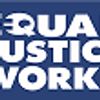This is Part Two of a two-part series about Public Service Loan Forgiveness. Be sure to check out Part One here!
In Part One of this series, we talked about the basics of Public Service Loan Forgiveness (PSLF): the types of payments, employment, and loans that are eligible for the federal program that offsets the financial burden of student loans for those graduates who choose to work in the public sector.
We'll keep the ball rolling this week by finishing out the top ten list of things you should know if you're interested in working in public service after graduation:
6. Keep track of your eligibility with the PSLF Employment Certification form. The Department of Education will not begin accepting loan forgiveness applications until 2017. However, they've set up a process to ensure you're working in the right kind of job and on track to make the 120 qualifying payments. The form is not required, but it will make your life much easier when you finally apply for PSLF and the Department of Education asks for proof of qualifying employment for the past 10 years.
7. You must be employed by a government or nonprofit organization when you apply for PSLF. When you submit your PSLF application after making 120 qualifying payments, you must be working for a qualifying employer. Forgiveness is not automatic - the Department of Education will create an application process that all applicants will have to follow to receive forgiveness. This means applicants can't quit their public service job after making 120 qualifying payments - they must still be an active employee when forgiveness is granted, no matter how lengthy that forgiveness process may be.
8. You must be paid by a qualifying employer to receive forgiveness under PSLF. This one can be tricky. Some fellowships or contract positions are with a public service employer, but may be paid through a third-party. Make sure this third-party qualifies as a government, nonprofit, or public service employer based on the PSLF requirements (see Section 6 of the Employment Certification form). All of your paychecks must come directly from a qualifying employer in order to receive forgiveness after 120 qualifying payments.
9. You can combine multiple part-time positions to meet the requirement for full-time employment. PSLF defines full-time employment as an annual average of at least 30 hours per week. If you're employed in more than one qualifying part-time job, you can still meet this requirement by working a combined average of at least 30 hours per week. Just make sure that both jobs are with qualifying employers by completing the PSLF Employment Certification form!
10. Both Democrats and Republicans are scrutinizing the PSLF program. While PSLF is safe as of now, it is important to know about two failed FY2016 budget proposals that threatened to harm the program. The House Budget Committee recommended eliminating PSLF altogether, while President Obama proposed capping PSLF at the undergraduate loan limit of $57,500. If any changes are be made to PSLF, they will more than likely be part of legislation to reauthorize the Higher Education Act (HEA). Equal Justice Works will keep you updated on any legislative action. In the meantime, if you want to add your voice to the chorus of people supporting PSLF, check out the American Bar Association's Save #Loan4Giveness campaign or email us at debtrelief@equaljusticeworks.org to learn more about helping out.
If you need help understanding PSLF, download our free e-book Take Control of Your Future or listen in on one of our upcoming debt relief webinars. We provide lots of information about income-driven repayment plans and PSLF to help students and graduates learn how to better manage student debt.
Ashley Matthews is a Program Manager for Law School Engagement & Advocacy, managing the Student Debt and Student Engagement programs. Prior to joining Equal Justice Works, she worked as Communications Manager for Legal Services Corporation where she helped design strategies to increase congressional awareness of federally funded civil legal aid. She also led the digital content and communications team for PSJD.org, a public service initiative of the National Association for Law Placement (NALP). Ashley received her J.D. from the University of Miami School of Law.
